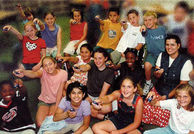The research is definitive: properly used, student response systems such as CPS enable educators to achieve startling improvements in learning outcomes with their classes. Is this surprising?
It shouldn’t be. Only by adopting these solutions can educators (and the group as a whole) achieve instant regular feedback on the class’ readiness and understanding of the topic. By having access to this, educators can tailor their work with the class to better suit the immediate learning needs. This fosters a teaching and learning experience based on “real time” formative assessment: it ensures the continuous participation of students and the the educator’s ability to respond instantly to learning opportunities.
Steve Draper, University of Glasgow has created an extensive on line resource for educators which is not product-specific but is concerned instead with practical considerations for educators interested in the benefits and barriers to employing student response systems and practices. This resource includes a growingbibliography of references to educator experiences.
Will Thalheimer provides a further reference listand adds adding useful critical appraisals.
Dee Silverthorn of the School of Biological Sciences at the University of Texas a Austin uses a CRS in her upper level vertebrate physiology class. You can see and hear her describe her experiences and see the CCS in action through a series of well-produced QuickTime videos at University of Texas. Other educator videos can be viewed at Purdue University. The Interactive Technology to Improve the Classroom Experience (INTICE) project at the College of Engineering at the University of Texas at Austin evaluated the use of a CRS in one of their architectural engineering core classes. Their report details their evaluation methods and results.
A White Paper by eInstruction‘s Dr Darryl Ward describes the classroom methodology for CPS (email cpswhitepaper@manzana.

